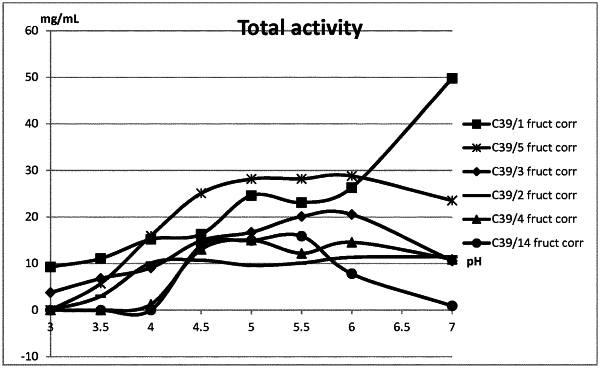| CPC A23L 2/02 (2013.01) [A23G 3/366 (2013.01); A23L 33/175 (2016.08); C12N 9/1051 (2013.01); C12P 19/18 (2013.01); C12Y 204/01005 (2013.01); A23V 2002/00 (2013.01)] | 15 Claims |

|
1. A process for reducing the monosaccharide and/or disaccharide content in a food material, the process comprising reducing the sucrose level in the food material by at least 95% by contacting the food material with calcium chloride having a concentration of 0.8-1.2 mM and a glucosyltransferase having a concentration of 12 to 18 U/g sucrose, at a pH between 3 and 3.5, the glucosyltransferase comprising an amino acid sequence having 100% identity to SEQ ID NO:1,
the food material comprises orange juice, and
the glucosyltransferase is the only enzyme that caused the reducing of the sucrose level in the food material by at least 95%.
|